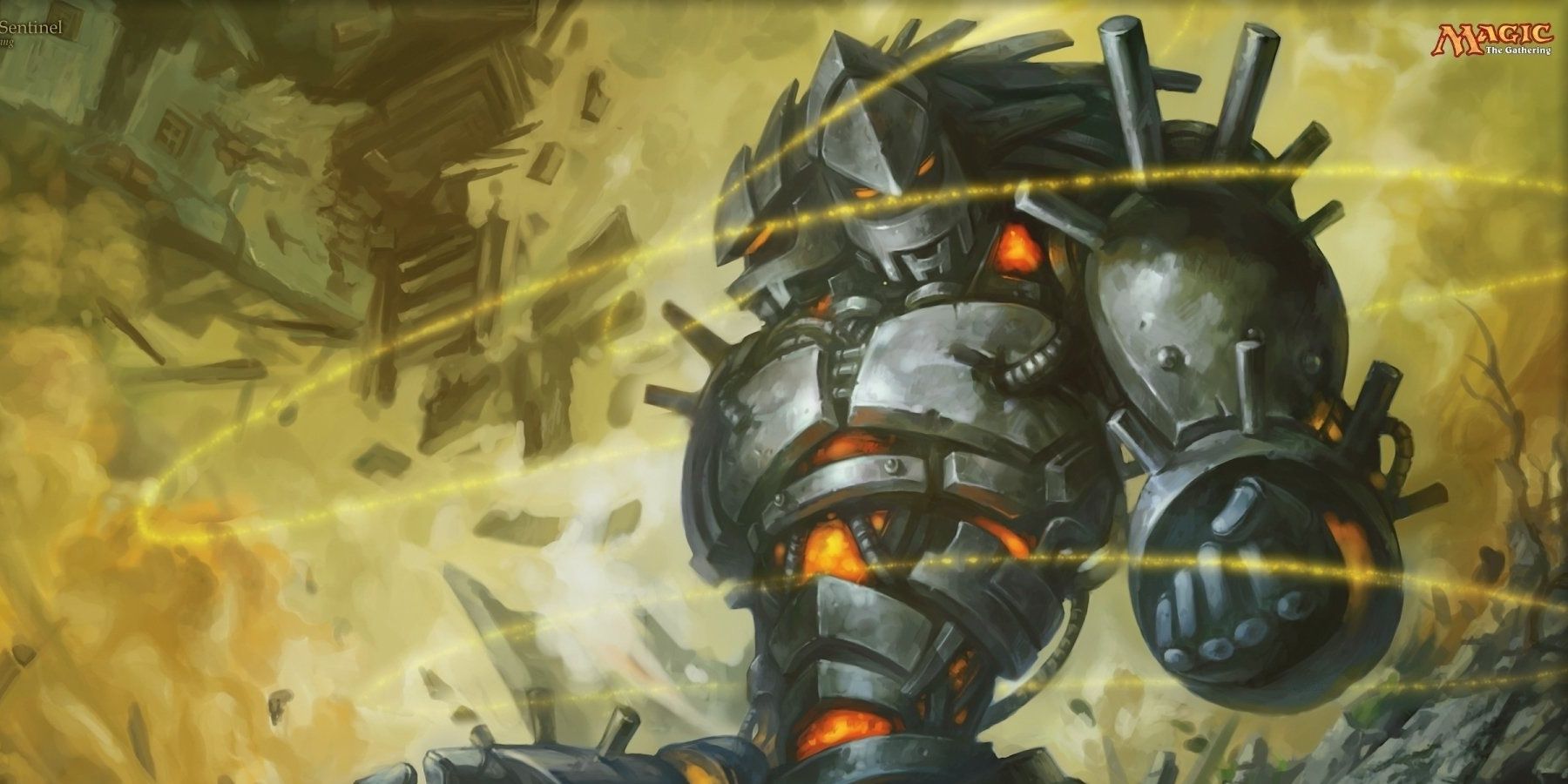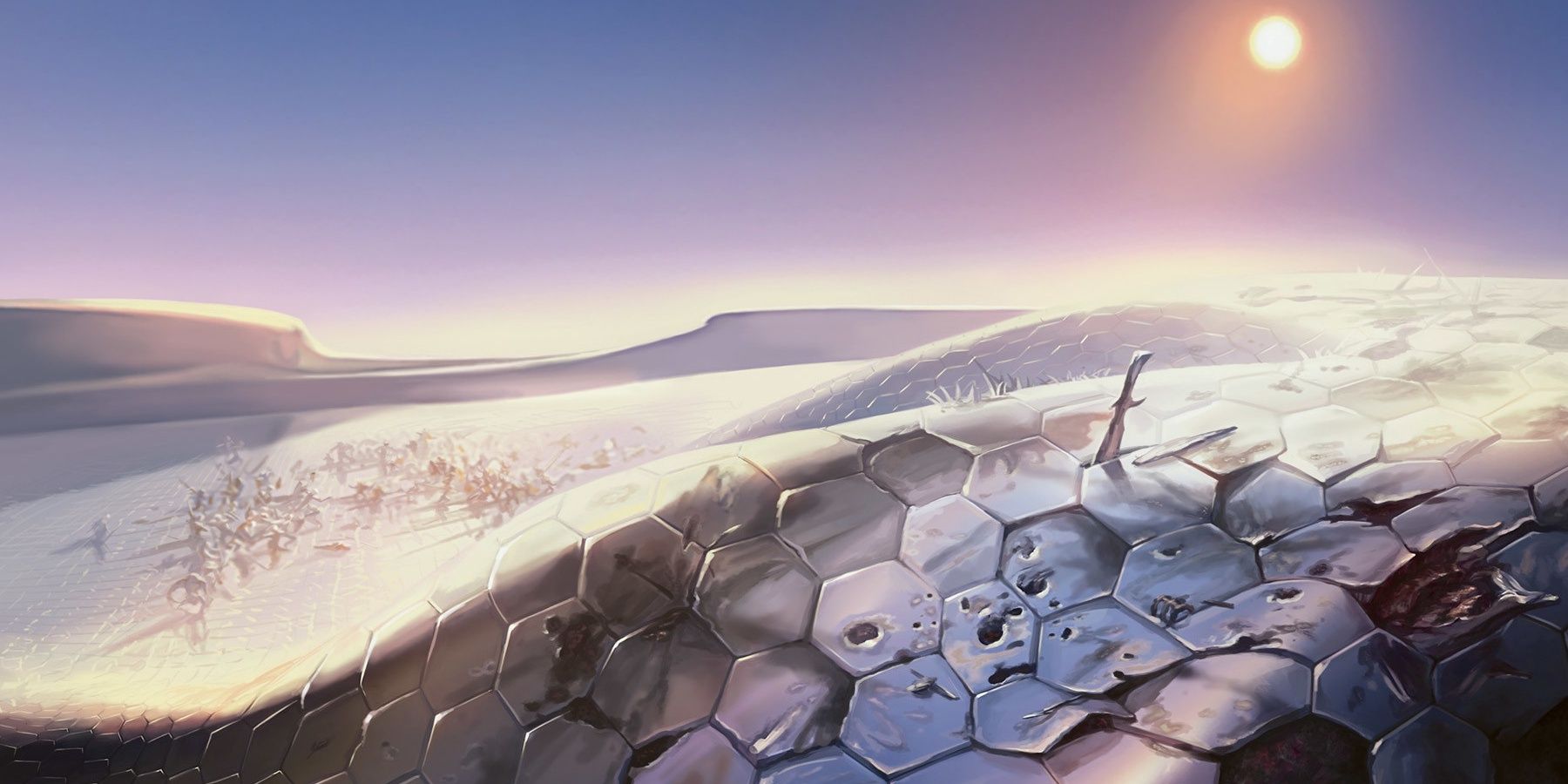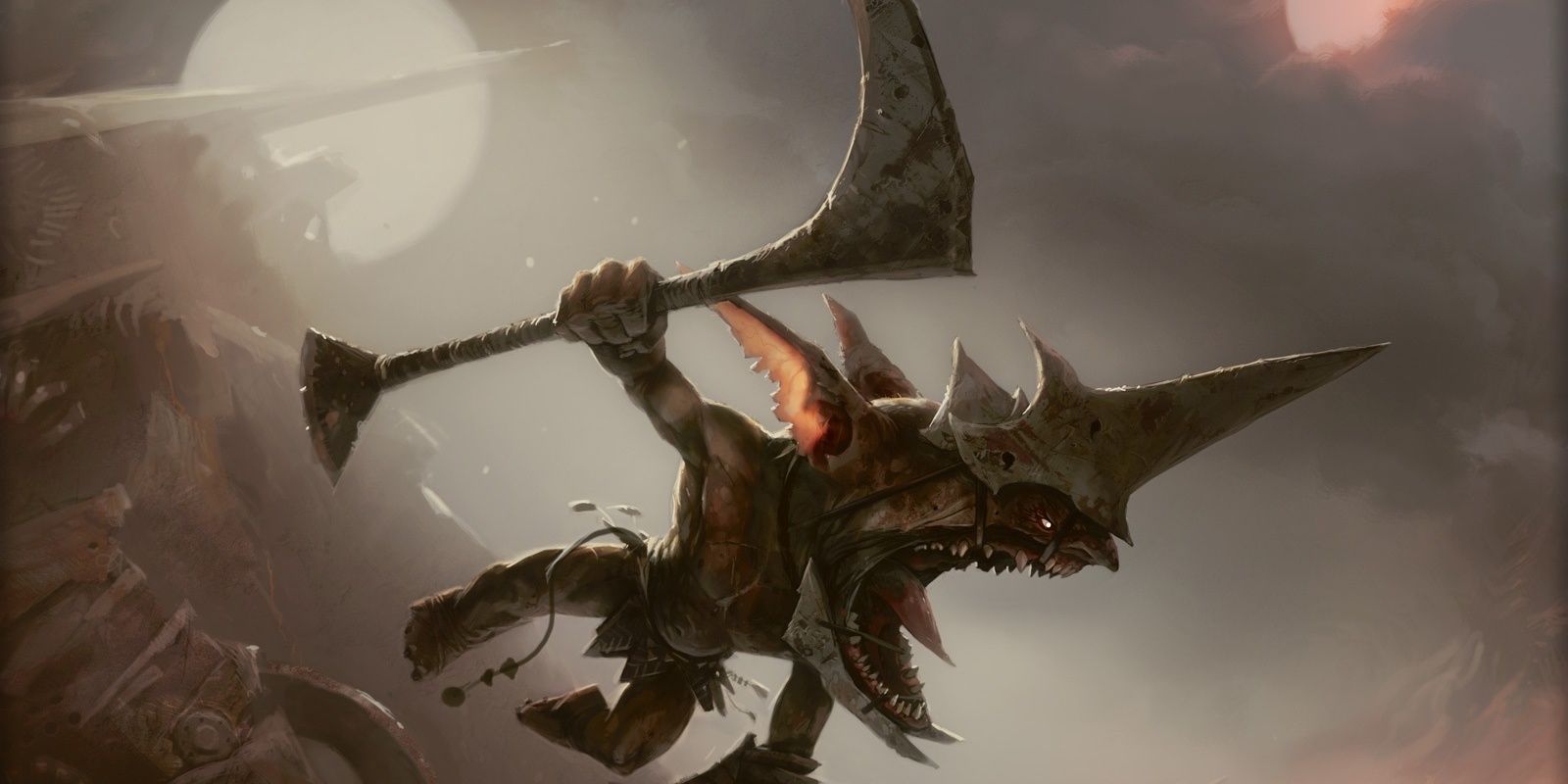In Magic: The Gathering, most planes are a part of nature, but a few of them were created by powerful beings for specific purposes. Rath is an example from the older lore, as is Mirrodin, another artificial plane. It's a place defined by omnipresent metal, and that fact will be immediately clear to any Planeswalker who visits.
Eventually, the Phyrexians would invade this plane and turn it into New Phyrexia, since they lost the original Phyrexia some time ago. But until then, Mirrodin was a diverse and fascinating place where metal was king, something that was represented strongly in the game too.
Geography & Features
Karn, the great silver golem (and the creation of Urza) made his own plane, and it started off as a blank slate of sorts. It was a hollow metal sphere with a colorless core of mana for power, and its only inhabitants were tiny blinkmoths (living spots of light) and golems that were created in Karn's own image to guard the place. Karn also gave the newly-born Mirrodin its own boss, a being that would later become Memnarch.
Karn left, and Memnarch longed for his master to return and create a more expressive plane to call home. Mirrodin's inner core became unstable, and five "suns" (one for each color of mana) were born. Mirrodin itself began to take shape in greater detail, and Memnarch used special devices called soultraps to bring beings from other planes to his own.
Mirrodin's surface is often based on the colors of mana. It has vast plains of razorgrass, known as the Razor Fields, and this part of Mirrodin is also home to the Cave of Light (which is connected to a tunnel that leads to Mirrodin's c0re). True to its name, razorgrass is sharp and metallic, able to cut anyone who's not careful. There is also the great Quicksilver Sea, an ocean of liquid quicksilver, and the sea has shores along the Razor Fields and the swamps of Mirrodin alike. This sea is also home to Lumengrid, a great city on stilts that houses many of the plane's blue mana-affiliated creatures.
Elsewhere, the great swamp known as Mephidross is perhaps the direst place on Mirrodin. It's a land of endless marshlands, rotting metal and a noxious green gas known as the Dross. Anyone who visits here will slowly go mad and become a nim, a metallic zombie. A miniature mountain called Ish Sah can be found there, home of a tyrannical overlord named Geth.
Nearby are the Oxidda Chain, a great range of rusty iron mountains that's home to the Great Furnace, as well as many human warrior and blacksmith tribes. The Tangle is Mirrodin's great forest, a place of copper trees, the biggest and most famous of which is Tel-Jilad. Its green, coppery surface is etched with the written history of Mirrodin, and not just anyone is allowed to read it.
Other places of note include Panopticon, the central darksteel citadel inside Mirrodin's core where Memnarch once resided and controlled the entire world. There is also the Glimmervoid, a featureless plain with hexagonal tiles on its surface. Spells cast there might be reflected and multiplied by the mirror-like surface.
Inhabitants of Mirrodin
Soon enough, Mirrodin became home to more than the blinkmoths and Karn's golem guardians. This plane is also home to the myr, a race of artificial creatures with slender bodies and beak-like heads. They have a strong affinity for one another, and they hide many secrets from the other races. Memnarch created them for his own purposes and could observe the plane through them, but after he was destroyed, various Myr either shut down or learned to think for themselves. Later, the Phyrexians would convert many of them to their side.
Many humans can be found on Mirrodin too, and they all have metal incorporated into their bodies. White-aligned humans are the Auriok, master traders and diplomats. The blue humans are the Neurok, masters of artifice and arcane knowledge at Lumengrid (not too different from the Esper shard of Alara). Black mana humans are the Moriok, who have a sickly appearance and metal plates welded over their eyes. They are often scavengers or serve vampire lords. The Vulshok are the red mana humans, living in the Oxidda Chain as expert blacksmiths and weapons builders. Finally, the green-aligned Sylvok live in the Tangle as dedicated druids who venerate nature with their elf allies.
Other races include the Loxodon, the elephant people who allied with the Auriok in the Razor Fields, and the Vedalken, four-armed, blue-skinned humanoids who tended to the great Knowledge Pool at Lumengrid. In black mana, vampires and zombie-like nim were common in Mephidross, and in red, goblins with eel-like heads could be found just about anywhere.
As mentioned earlier, elves lived in the Tangle with the Sylvok people, along with the mysterious trolls. These three green-aligned races trusted no one else with the secrets of the Tel-Jilad tree. Overhead, Mirrodin was home to a handful of angels, who typically embodied either white or colorless mana. Of course, they also had a few demon counterparts to contend with. Even on a metal world, good and evil must clash.



